How to think, how to consume, how to give: three ‘new’ perspectives
I have read three unusual books recently, each one of them the sort that changes the way you see the world. The first was exceptionally intelligent, the second excitingly creative, the third deeply wise. The first, for all its brilliance, lacked something essential, which I found in the second and third. So I decided to review them together.
The first book was Daniel Kahneman’s Thinking Fast and Slow. It is a book that sums up a lifetime’s research and reflection. Kahneman, a Nobel-prize winner, is a behavioural economist, which means that he uses a combined knowledge of psychological studies, neuro-science and statistics to work out ways of predicting, and influencing, mass behaviour. This book is intended to help us to think better, by allowing us to understand the ways in which the spontaneous, subconscious, element of our minds shapes our thinking, and is likely to distort it, unless we put in the effort to stop it. The book is intriguing in itself, but important also because its author and his colleagues are highly influential in global economics, and therefore in global politics.
The second, by contrast, overflows with the fearless energy of a thinker at the beginning of her career. Anna Simpson belongs to the generation that takes modern media, marketing and global interconnectedness for granted, and she is passionate about their possibilities for good. Simpson, who is the editor of Green Futures, wrote A Brand Strategist’s Guide to Desire: How to Give Consumers what they Actually Want to encourage businesses to identify and cater for human desires that are deep, lasting and significant: her chosen examples are community, adventure, aesthetics, vitality, and purpose.
Lewis Hyde, the author of The Gift: How the Creative Spirit Transforms the World, is a poet. His book explains and compares two ways of exchange, the gift-economy and the commerce-economy. He uses anthropology and folk tales to describe the way in which gifts freely given can function socially not only to pass goods from those who do not need them to those who do, but also to form bonds that strengthen and enrich communities. Gift-giving is inherently fruitful. He then applies the same idea to the giftedness of the artist.
Kahneman begins by explaining his key idea: we think in two fundamentally different ways. The thinking of ‘System 1’ is effortless and automatic, and includes all the thinking we don’t notice we are doing, such as judging the provenance of a sound or reading familiar words or interpreting the appearance of a stranger. ‘System 2’ comes into play when we make an effort to think: solving a maths problem or negotiating a hazard or analysing our social prejudices. System 1 is consistently active, essential to normal functioning, very effective and very influential on our thinking. However, it has no way of noticing its own mistakes. System 2 has the capacity to correct both its own mistakes and those of System 1, but it requires time and energy. (Experiments have measured the quantity of glucose needed to fuel a mathematical calculation, or a decision to resist a tempting piece of cake.) System 2 can work effectively on only one task at a time. As a result of all this, we tend to be lazy about actively thinking questions through.
On the basis of a mass of psychological experimentation from recent decades, Kahneman describes in rich detail the sometimes surprising ways in which we are led and misled by System 1. For example: if we feel happy, we are better at seeing connections between words; when we are asked a difficult question we regularly answer an easier one instead; when we judge an amount, we are heavily influenced by previous suggestions; we automatically create connections to turn disparate facts into a story; we assume that ‘what you see is all there is’. The latter illusion is so common that Kahneman shortens it to ‘WYSIATI’; when a group suffers from it, it is called ‘institutional blindness’. All this without our even noticing what we are taking for granted. The social results of this are massive, from the power of sensationalising headlines to mistaken testimony in court to poor selection of candidates for jobs to highly influential but useless financial predictions.
Kahneman wants to help us think better, and he offers many practical suggestions for waking up System 2 to help with this. His particular focus is economics, but the implications of his thesis are wide-ranging. Understanding our own biases and presumptions will help all of us be more humble, just, truthful, peaceable, and cooperative. Virtue ethicists will be particularly interested in the relation between System 1 and the character that shapes our specific actions. Those who take seriously the life of the spirit will ponder how grace might work to reshape the prejudices of System 1 and improve the conscious self-examination that is the task of System 2.
The blurb on the cover declares, ‘A lifetime’s worth of wisdom.’ Kahneman’s discussions are wide-ranging, careful, solidly based, exceptionally perceptive and attentive to other points of view. But is that enough to make it a wise book? The writer is keen to base economic theory on real human beings, not the ‘rational economic man’ of Classical theory. Humans, unlike ‘Econs’, as he dubs them, often do not behave in a way that will maximise their gains. They can be illogical and irrational. This critique certainly moves in the direction of wisdom, but is it radical enough?
We might notice first a problem with his evidence. The majority of the experiments he described used American college students, who were predominantly White, English-speaking, Intellectual, Rich and Democratic – ‘WEIRD’, one might say, from the perspective of the average person on the planet. Could it be that their assumptions might distort some of the results? Then I wondered about Kahneman and his colleagues – it was obvious that they lived and worked in the same privileged milieu. How would that shape the effect of their System 1? What form would their institutional blindness take?
The following paragraph might suggest an answer.
Except for the very poor, for whom income coincides with survival, the main motivators of money-seeking are not necessarily economic. For the billionaire looking for the extra billion, and indeed for the participant in an experimental economics project looking for the extra dollar, money is a proxy for points on a scale of self-regard and achievement. These rewards and punishments, promises and threats, are all in our heads. We carefully keep score of them. They shape our preferences and motivate our actions
Kahneman’s is a world that takes wealth for granted (the very poor are dismisssed as soon as they are mentioned). It identifies no goods except ‘self-regard and achievement’. It has no criteria for selecting worthwhile goals except preferences. Most crucially, such preferences cannot be modified. In other words, our desires cannot be prioritised, deepened or educated. Such a conclusion, though, would not only undermine millenia of moral education, it would also deny the extraordinary adaptibility of the mind revealed by modern neuro-science. We can learn not only to think, but also to feel, in better ways.
Anna Simpson takes as her starting-point the fact that some desires are more important than others. Capitalist consumerism has led businesses to employ what she calls the ABCD model. They start with Action, by making a product. They then develop a Brand for it. In order to sell the brand, they then create an artificial ‘Culture’ or image, which makes people Desire the brand. Simpson suggests that instead business should begin by identifying worthwhile desires that people already have, then collaborate with potential customers to define its own culture appropriately so that it can form a suitable brand, which it then enables it to ‘co-create’ the actions that will produce products. The word ‘co-create’ is central. The new business philosophy that Simpson describes, which has grown out of the internet and social media, but often also has strong local connections, is one of constant consultation and collaboration with potential users of a product or a project to ensure that they are getting the service they need.
Simpson illustrates each of her five significant desires with case studies from all over the world: the method is adaptable to very different cultures. It is also suited to helping poorer countries. So, for example, the Ansaar Management Company in the Punjab provides affordable housing in poor areas, including those devastated by floods, but also aims to do so in a way that builds strong communities. Members of the scheme have to help build their own houses and commit themselves to living in it and to contributing to community life for three years. Meanwhile in Lifebuoy Soap have been campaigning on three continents to reduce child deaths from diarrhoea simply through educating people to wash their hands. Innovation and creativity also flow from this collaborative approach. One lovely example is ‘carrotmobbing’, which is the opposite of ‘boycotting’. Instead of people combining to refuse to trade with someone they disapprove of, they swamp with their custom a company which is trying to do something good. There are lots of exciting examples at www.carrotmob.org.
Business at its best, Simpson tells us, release our imagination and energy to exploit technology wisely and work together to build a future full of hope. Could ‘business as usual’ come to look like this? Could capitalism be radically reformed to harness the pursuit of profit to truly worthwhile ends? Can we, in the end, entrust our futures to what consumers ‘actually want’? An uneasy question remains: what if most of us continue to want the wrong things? And what about the genuine needs that the market fails to satisfy?
Kahneman treats all preferences of equal values. Simpson argues that enterprises will profit by targeting deeper desires. Lewis Hyde, meanwhile, turns the whole question of desire on its head. He explores what happens when people task not, ‘What do I want?’, but rather ‘What can I give?’ And he examines the communities that help them to do this. so, for example, he tells the tale of an anthropologist who lived with a band of Bushmen in South African. When she left, she gave the women in the band each a collection of cowrie shells, enough for a necklace. When she returned a year later, she found that the shells had been scattered throughout the extended community. In a culture of gift-exchange, the gift must always move. Gifts should not be turned into capital; for what is stored up is taken out of shared use. The boundaries of modern capitalism, by contrast, can in themselves create scarcity: after the war in Bangladesh thousands of tons of donated rice rotted in warehouses because the poor had no money to buy them. We might think of our own supermarkets destroying surplus food, while food banks struggle to cope with demand.
Gifts, Hyde argues, are fruitful, because each act of giving creates or strengthens a personal bond. The whole system of interchange brings vitality to a culture, and the introduction of a money economy often destroys the well-being of traditional societies. Rivers and forests are over-exploited, kinship ties are broken, age-old celebrations give way to drugs, alcohol and depression.
Hyde’s analysis is not, however, naive. He recognises that the strength of a gift economy, its human bonds, is also its weakness. There is a limit to the size of a community that can be bonded by gifts. Everyone you meet is either inside the community or outside it, and if he is not your friend, he are likely to be your enemy. A superb chapter charts the development of usury, revealing its double-edged nature: some medieval Christians, for example, argued that you could charge interest on loans to Jews as a non-violent version of holy war. Other Christians knew that this was to limit the call to love one’s enemy. Hyde used the vivid image of blood circulating around a body, keeping the body alive and healthy, and staying fluid itself, so long as it was contained within the skin. But Christians are called to give to strangers. So medieval Christianity at its best was like a bleeding heart: ‘The Christian can feel the spirit move inside all property. Everything on earth is a gift and God is the vessel. Our small bodies may be expanded; we need not confine the blood. If only we open the heart with faith, we will be lifted up to a greater circulation and the body that has been given up will be given back, reborn and freed from death.’
As societies outgrew the bonds of personal friendship, usury gradually turned from a weapon into a normal means of lending, while commerce made it possible to negotiate peaceably with strangers. The stranger is kept at arm’s length, but he is no longer threatened. Before there was a choice between hospitality and hostility; now there is justice, impartial and impersonal. Hyde recognises that genuine goods that a commercial economy can bring, and argues that what we need is a balance between gift and commerce. Nowadays, however, commerce so dominates that the gift economy has all but disappeared. Yet some practices, such as the arts, cannot flourish without it. It is no coincidence, he argues, that we talk of artistic talent as a gift. If an artist does not continually give away his gifts, his inspiration will dry up and his art will die.
The Gift made me ponder the speed of commercialisation even during my own life-time. More and more of our practices are being measured by money. Do you remember when you could park for free in all but the biggest of cities? Do you remember when teachers had the spare time and energy to run football clubs and scout camps? Do you remember when the average age of volunteers was under 50? Such thoughts need not lead to despair. A new wave of economists is exploring radically new ways of thinking about money: see for example https://www.youtube.com/watch?v=xQ-LYElvtEU; the internet is supporting neighbours and volunteers, as well as the businesses Simpson describes, in creative ways of sharing and cooperating. The internet, again, is providing an immense resource for freely shared knowledge, with Wikipedia providing an outstanding example.
To summarise, Daniel Kahneman is interested in teaching us how to be clever, but does not see rationality as including wisdom about goodness. As a result, for all the book’s emphasis on correcting the mistakes of our unconscious, it fails to notice its own major bias in favour of the rich and privileged. Anna Simpson’s collaborative approach means that potential consumers, who include the very poor as well as the very rich, are given a full say. In Hyde’s gift economy, those who are in need are put centre stage, as the question, ‘What can I give?’ leads immediately to the question, ‘Who can make use of my gifts?’
Most of us, however, still live largely in Kahneman’s mental world. Hyde’s emphasis on the giving of gifts reminds us of the personal conversion that is needed to support the gift economy. Our history has left us with commercialised instincts: to think of our possessions as ‘mine, not yours’, to judge our exchanges by profit, to fear that we will be left without. That is the mindset that behavioural economists, however perceptive, take for granted. Hyde’s deepest challenge is for us to rethink our way into the gift economy, learning once again to trust in Providence like the widow who dropped her mite into the Temple collection. Christmastide is not a bad place to start. As the new gifts arrive we might let the old ones move on.

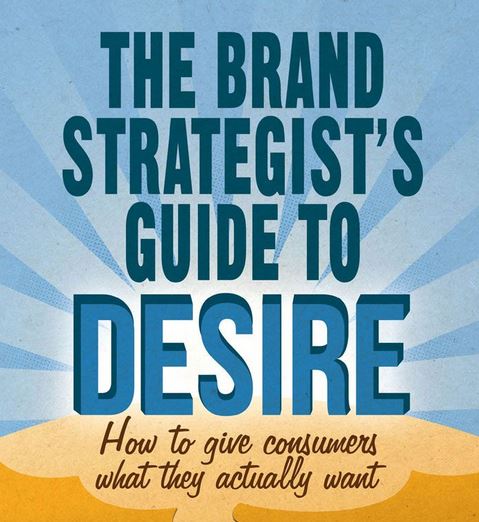







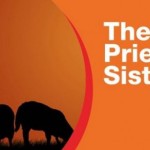




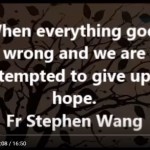
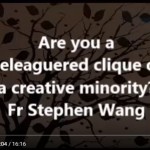

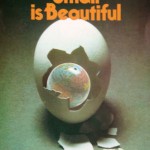
typo? “thinking questions througHyde”
Thanks – corrected!
Kahneman doesn’t ‘dismiss’ the poor – your System 1 is letting you down. He is talking about economic decisions taken by people like the people reading the book. My System 2 says that is not a sin.
I read Kahneman’s book last year, I found it a bit dry in places (he uses statistics to prove no one really takes much notice of statistics). He reveals a lot about what it means to be human. We’re not robots who make every decision by weighing up the options. Another book I read about the same time was Mistakes were made by not by me by Carol Tavris and Elliott Aronson. It looks at cognitive dissonance and the tricks we use to convince ourselves we’re nice people (even when we’re not). I found it similar to but scarier than Kahneman’s book!